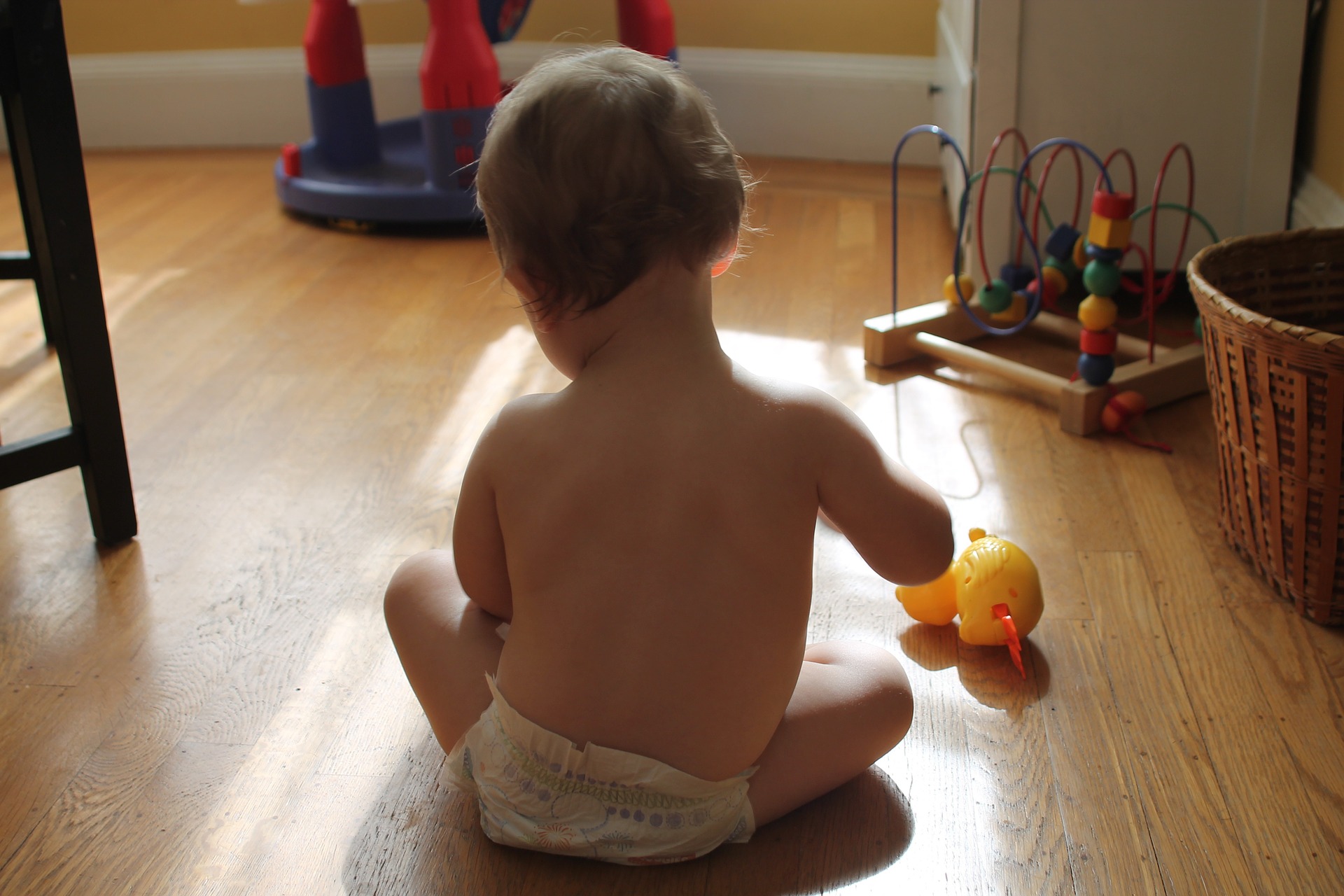Today’s guest post is from our friends at Monti Kids; Monti Kids takes all the guess work out of finding the best developmental toys for babies and allows parents the confidence to know their babies, toddlers, and kids have the best, and most age appropriate, developmental toys. To learn more about Monti Kids, check out our review here.
The experiences and environment your baby is exposed to from birth are an opportunity to encourage an immense amount of growth and learning. By choosing toys that are developmentally appropriate with just enough challenge, you can make the most of your little one’s waking hours and lay the foundation for her future. Here are some of our favorite tips on making this magic happen!
1. Choose toys designed with a purpose: Ask yourself, “Will this toy give my child the opportunity to grow, and go beyond just keeping her hands occupied?” At this stage of development, your baby’s brain is growing fast. Toys created to help develop new skills and coordination, while exploring, concentrating, and problem solving, will bring the most value to her experience. These kinds of toys will engage your child’s mind and hands together, allowing for a deeper learning experience as she plays.
2. Build attention and focus with open-ended toys: Simple and “open-ended” toys, ignite your child’s natural curiosity and imagination and help sharpen his focus. These toys encourage your child to practice new skills and build on previous experiences with new insight. More importantly, these toys provide an opportunity for your child to figure things out independently and therefore gain an understanding of his capabilities.
3. Create active learners with simple toys: Toys that are made of natural materials without lights, sounds, or too many bright colors or patterns allow children to focus as they play without being distracted or overstimulated. When a toy is “passive,” such as a simple wooden grasping toy, your child must be “active” in order to explore it rather than just waiting to be entertained.
4. Explore with real objects: The objects, language, and environment your baby interacts with creates his understanding of the world. So it’s helpful to present real, functional objects to your little ones. To best support this type of concrete learning, let your baby experience some of your safe “real stuff” like wooden spoons, mirrors, keys, and fruit.
5. Look for developmentally appropriate toys: Find toys that are designed to grow with your child and present new challenges as she develops. Observe your child to see which skills she is working on at a given time. If she is beginning to reach and scoot, look for slow rolling rattles or balls that might roll just enough to feel attainable. If a toy is too easy, she might become bored; if a toy is too challenging, she may get frustrated. If this happens, don’t fret! Put the toy away and bring it out again in a few days. Often times, it will seem brand new and pique her interest as you hoped it would.
About Monti Kids
85% of the brain is formed by age 3, a time when most children are not in school and parents are left guessing how to meet their child’s developmental needs. Monti Kids gives you access to the world’s #1 early education curriculum, Montessori, in a subscription made easy to use at home. You can sign up anytime between birth and age three. Every 3 months, you receive a box of Montessori toys tailored to your child’s age and stage of development, plus corresponding 2-minute videos that show how to introduce the toys and support your child’s learning like an expert. The rest is up to your little one and their exceptional ability to learn through play!

Leave a Reply